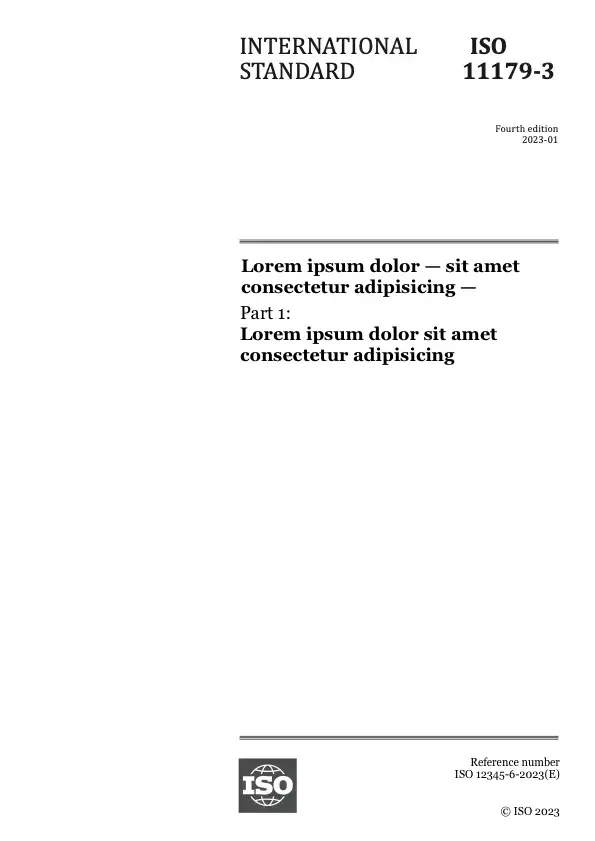Тезис
This part of ISO/TS 10811 defines methods of measurement, algorithms for analysis and the report of shock and
vibration data for equipment in buildings which is sensitive to shock and vibration. The methods are applicable to
the quantification of a future installation or the verification of an existing one.
Accurate vibration data acquisition, analysis and uniform reporting methods are needed to evaluate vibration
relative to manufacturers' and generic vibration criteria. Expected levels of vibration can be found in IEC 60721.
Procedures for testing of equipment can be found in IEC 60068.
NOTE A classification system of environmental vibration conditions established from measurements according to this part
of ISO/TS 10811 should serve as guidelines for designers, manufacturers and users of shock-and-vibration-sensitive equipment
and for building constructors (see ISO/TS 10811-2).
The types of shock and vibration considered are those transmitted from floors, tables, walls, ceilings or isolation
systems into an equipment unit. The vibration and shock response of individual mechanical or electronic parts
inside the unit are not considered explicitly.
The types of sensitive equipment envisaged include, but are not limited to, the following:
a) stationary computer systems, including the peripherals;
b) stationary telecommunication equipment;
c) stationary laboratory equipment such as electron microscopes, equipment using scanning probe methods,
biotechnical instrumentation, mass spectrometers, etc.;
d) mechanical high-precision instruments (tools) such as equipment for microelectronics production;
e) optical high-precision instruments, systems for photoreproduction;
f) electromechanical systems in traffic control centres for trains;
g) security equipment (fire intrusion) and equipment for access control.
The types of shock and vibration considered herein can be generated by the following:
_ external sources, for example traffic (by road, rail or air), or building and construction activities such as
blasting, piling and vibratory compaction; the vibration response to sonic booms and acoustical excitations is
also included as well as weather-induced vibration;
_ equipment for indoor use, such as punch presses, forging hammers, rotary equipment (air compressors, air
conditioner systems, etc.) and heavy equipment transported or operated inside a building;
_ human activities in connection with the service or operation of the equipment, for example, people walking,
especially on raised floors.
The measurement and evaluation of shock and vibration effects on sensitive equipment in buildings covered in this
part of ISO/TS 10811 does not directly consider the human operators' capability to observe, operate or maintain
the equipment. For vibration effects on human beings, see ISO 2631.
The frequency range of interest is normally 2 Hz to 200 Hz. Normally the dominant frequencies are less than
100 Hz because they represent the response of the elements in the building. For special purposes, another
frequency range may be used and the numbers referring to frequency range should be changed accordingly.
The vibration amplitude and duration depend mainly upon the source, its distance from sensitive equipment, and
the response of the elements of the building containing the sensitive equipment. Expressed in terms of vibration
velocity, the values to consider are in the range 0,001 mm/s to 10 mm/s.
This part of ISO/TS 10811 deals only with vibration from a maximum amplitude point of view. The concept of
vibration dose (e.g. estimation of fatigue life) is not treated.
Preview
Общая информация
-
Текущий статус: ОпубликованоДата публикации: 2000-06Этап: Подтверждение действия между-народного стандарта [90.93]
-
Версия: 1
-
Технический комитет :ISO/TC 108/SC 2
- RSS обновления
Жизненный цикл
-
Сейчас
ОпубликованоISO/TS 10811-1:2000
Стандарт, который пересматривается каждые 5 лет
Этап: 90.93 (Подтверждено)-
00
Предварительная стадия
-
10
Стадия, связанная с внесением предложения
-
20
Подготовительная стадия
-
30
Стадия, связанная с подготовкой проекта комитета
-
40
Стадия, связанная с рассмотрением проекта международного стандарта
-
50
Стадия, на которой осуществляется принятие стандарта
-
60
Стадия, на которой осуществляется публикация
-
90
Стадия пересмотра
-
95
Стадия, на которой осуществляется отмена стандарта
-
00
Появились вопросы?
Ознакомьтесь с FAQ
Часы работы:
Понедельник – пятница: 09:00-12:00, 14:00-17:00 (UTC+1)

